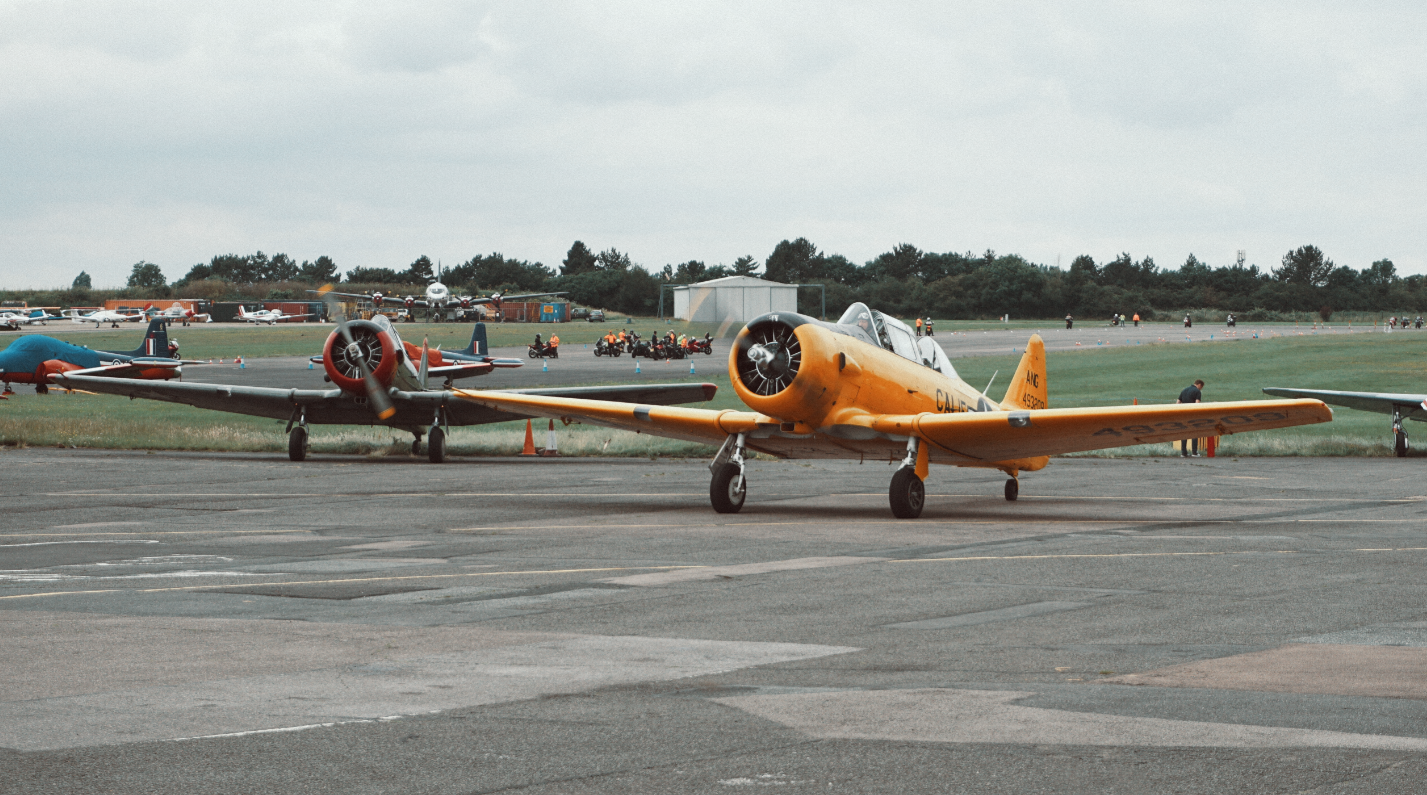We are pleased to confirm another 2 aircraft from our home fleet, the T6 Texans. The sound of roaring radials will be brought to life for the crowd to enjoy!
In todays announcement we reflect on a key aircraft used for pilot training. T-6 Texan was used to train pilots of the United States Army Air Forces (USAAF), United States Navy, Royal Air Force and other air forces of the British Commonwealth during World War II and into the 1970s.
Aero Legends are pleased to announce the following aircraft to our flying list:
T6 Texan
G-DDMV
G-DDMV was originally built in 1943, although all records of her service have disappeared. During 1949 she was returned to the factory for upgrading to T6G standard and re-emerged with the serial 49-3209.
After serving with various training units she was delivered to the Haitian Air Force on August 26th 1957 and given the serial 3209. The Haitian Air Force took delivery of 10 T6G, some of which were used as armed aircraft and used to counter incursions from the Dominican Republic by revolutionaries. 3209 was returned to the US during 1982, possibly the only survivor of the Haiti T6s. After her time in the Haitian Air Force she was sold at Auction to Larry Johnson and entered civilian life with the civil registration of N3240N. Initially she was ferried to Miami Florida, registered to Nostalgia Aircraft Inc and painted in a yellow US Navy colour scheme. By 1986 she had been registered to Nostalgic Aircraft Service, still in Miami where she remained until 1988 when she was sold to Jim Carlin of Delray Beach, Florida.
A year later she was sold to Paul Morgan and brought to the UK and registered as G-DDMV on 30th April 1989, at this point she was based at Sywell. By 1990 she had been changed into California Air National Guard markings which she remained in when sold to Colin Dabin. Her base remained at Sywell but she also spent time at Rochester Airport. During 2013 she suffered a catastrophic engine failure which saw her languishing in a hangar at Headcorn until Aero Legends purchased her in January 2015 for a full overhaul and to have a new engine fitted.
G-BGHU ‘CARLY’
Since she rolled off the production line in 1941 ‘Carly’ has undergone a number of upgrades and actively served with a number of different air forces. In 1941 she was constructed as AT-6C with wooden rear fuselage and tail to save strategic materials and in 1943 had a standard full metal fuselage applied. In 1950 she was further upgraded to T-6G configuration by North American Aviation.
‘Carly’ served with the USAAF between 1942 and 1950. She was then sold to the French Air Force in 1952 and converted to COIN configuration, seeing active service in Algiers. In 1961 she was sold to the Portugese Air Force and served in Angola, serial # 1707. She was sold to a private buyer in 1979 and joined the Aero Legends stable in 2019.
The paint scheme of this aircraft represents a T6G as flown in Korea by the 64th TCGP in August 1950. All markings, numbers etc are as originally worn during its service with the U.S.A.F. In this guise, T6’s were used in the Korean war for forward air control and target marking. They were armed with phosphor rockets and machine guns, although the guns were removed later in the campaign as the pilots spent too much time shooting up targets rather than marking them for others to destroy!
It was stationed at AB.3 Negage and AB.4 Henrique de Carvalho in Angola. It returned to BA.7 Aveiro, Portugal before wfu in 1978.All ex-French T-6G and all ex-German Harvard 4 were COIN. (Counter Insurgency) The only series never armed in Portugal were SNJ-4 and the MDAP T-6G. All information on the Portuguese history was obtained by Joao M. Vidal A former pilot of 1707
The French upgrade happened before joining the PoAF. This upgrade consisted of a Water injection system to the P&W R-1340-AN1 increasing the power from the standard 600hp @36” Boost to 800hp @48” Boost limited to 5 minutes continuous. The upgrade also included an extra oil cooler, stall warning system, armour plate protection for the pilot, weapons ensemble. They were reverted back to the standard T-6G when in service with the PoAF, however, the extra scoop for the oil cooler was never removed.
